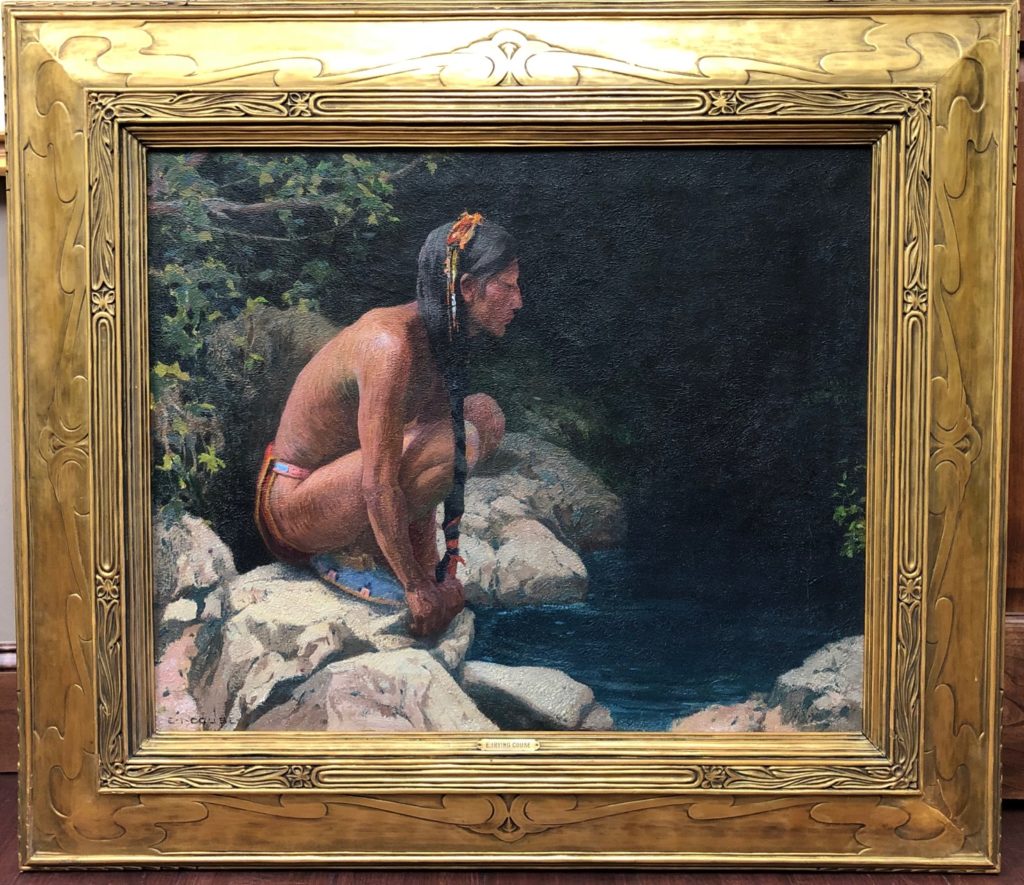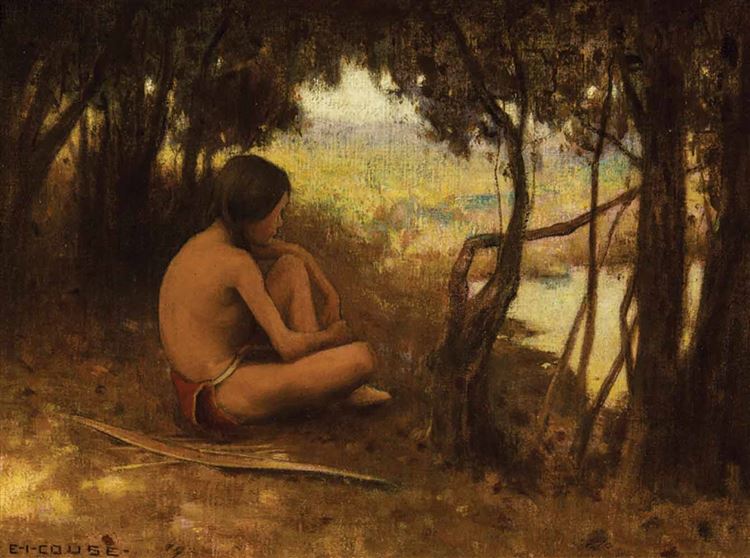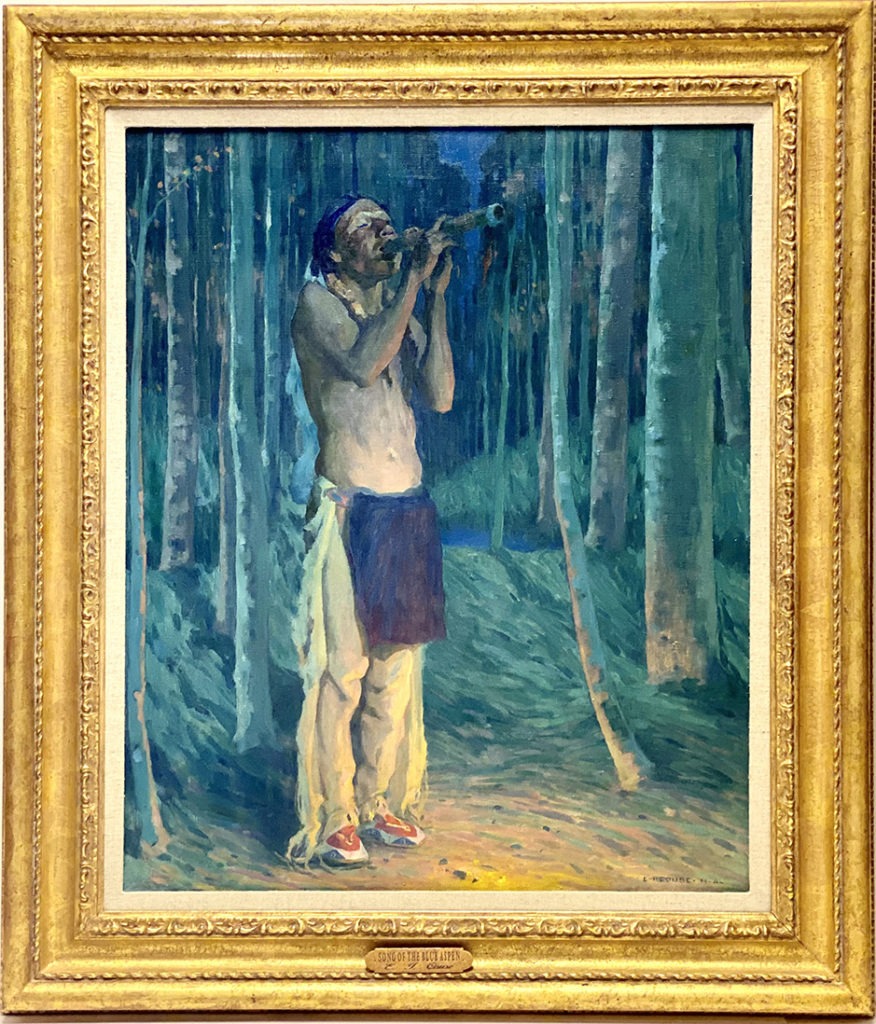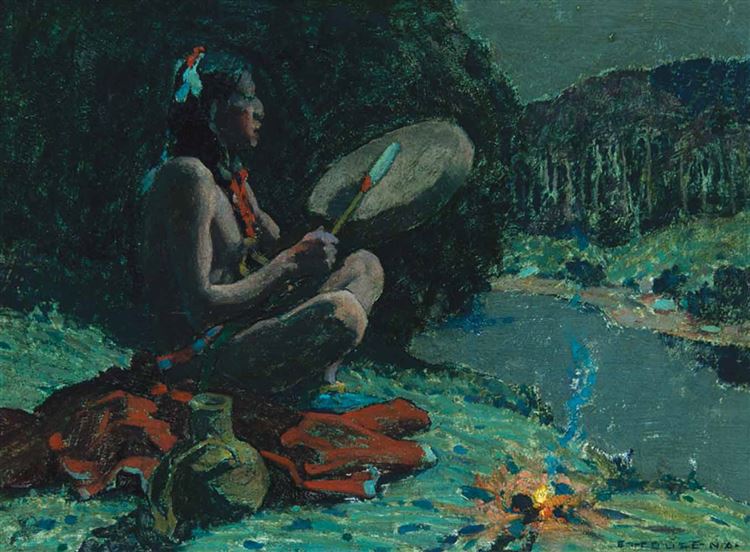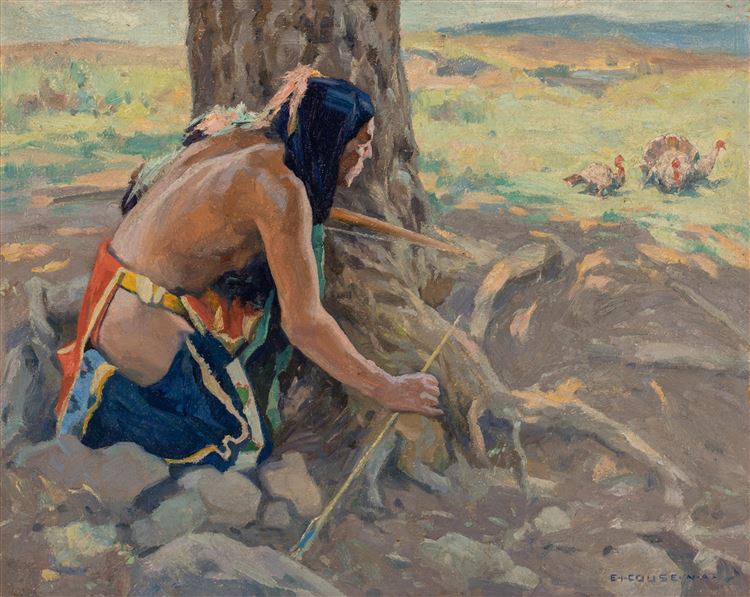1866-1936
Eanger Irving Couse was born in Saginaw, Michigan in 1866. At a young age, Couse drew the Chippewa Indians near his home, setting the foundation for his lifelong fascination with Native American culture. As a young man, he left Michigan in pursuit of advanced training and better opportunities, first studying at the Chicago Art Institute, then at the National Academy of Design in New York City. While in New York, he proved to be a gifted artist, winning numerous prizes, and by 1886 had entered the Ecole de Beaux Arts in Paris, where he learned much about figure painting, including the habit of posing a model in a crouched or kneeling position close to the picture plane.
In 1891, Couse returned to America and traveled to Oregon, where he painted his first Indian portraits of the Klikitat tribe. He then returned to France for several years, but in 1897, came back again to Oregon, built a studio, and concentrated on his Indian paintings. In 1902, he moved to New York and attracted critical praise. The following summer, at the urging of his friend Joseph Sharp, he traveled to New Mexico and rented a house in Taos next door to the studio of Bert Phillips. He spent every summer painting in Taos until 1927, when he finally established a permanent residence there.
E. Irving Couse produced a great many paintings of the Pueblo Indians, but he was less interested in historical or ethnographical accuracy than in the portrayal of figures from an artistic standpoint. He was probably the Taos Society member with the highest reputation in his lifetime



